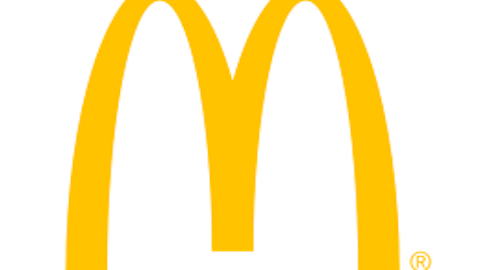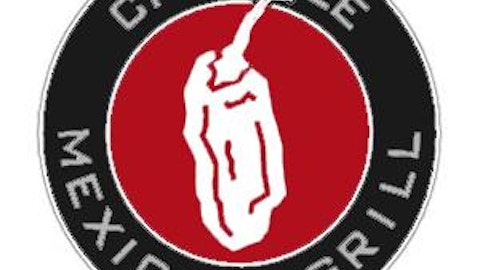Chipotle Mexican Grill, Inc. (NYSE:CMG) dropped in the month of July, peaking at above $400 per share and finishing the month below $300, as its quarterly report indicated that it might not meet the aggressive growth trajectory that the Street and investors expected. However, the stock has popped 19% over the last month and a half and now is actually up for the year (though underperforming the broader market). Chipotle, which made our list of the ten most popular restaurant stocks among hedge funds for the second quarter of the year (see the full list), offers investors an appealing growth play in what has been a surprisingly fast-growing industry over the past few years. In addition, market research firm ITG recently announced that it believes that Chipotle’s same store sales this quarter will beat sell-side estimates. If the restaurant can get its same-store growth going at a 6-8% rate as it opens new locations, this would indicate that its growth can be sustained for a considerable period of time before it starts to encounter the “Starbucks problem” and see new locations get much of their business by cannibalizing sales at existing locations.
One hedge fund which had a position in the stock at the end of the second quarter was Renaissance Technologies, which was founded by billionaire Jim Simons. Renaissance reported a position of about 600,000 shares, a stake worth nearly $230 million at that time (find more stocks that Renaissance Technologies likes). Coatue Management, which was founded in 1999 by Tiger Cub Philippe Laffont, increased its position by 49% during the second quarter to a total of about 570,000 shares; this made Chipotle one of the fund’s top ten holdings according to its 13F (see more of Philippe Laffont’s stock picks).
Here’s how dependent Chipotle is on growth: the $100 drop in its stock price came following a quarter in which it reported revenue growth of 21% compared to the same period a year ago (same-store sales growth was 8% for the quarter versus the second quarter of 2011). Expenses rose as well, but margins were held in check and earnings rose by 61%. A little over half of cash flow from operations in the first half of the year was used to purchase leasehold improvements, property, and equipment, which resulted in the company investing more in growth than it did in the first half of 2011. Chipotle’s 10-Q estimated that it would open about 160 new restaurants this year, including the 87 it had already opened; this brought the total number of locations worldwide to 1,316 at the end of June. Chipotle also deserves mention for being almost entirely focused on the U.S., in contrast to other restaurants such as McDonald’s Corporation (NYSE:MCD) and Yum! Brands, Inc. (NYSE:YUM). However, at 42 times trailing earnings and 32 times forward earnings estimates, the stock seems quite high priced.
Yum and McDonalds have performed fairly modestly recently- in its most recent quarter Yum experienced low growth compared to the same period a year earlier, while McDonalds actually saw a decline in its business- but the flip side is that they trade at lower earnings multiples. Yum’s is 21 while McDonalds’s is 17; both are expected to see growth next year, putting both their forward P/Es in the teens. Two peers in the restaurant industry seeing high earnings growth- 19% and 23% last quarter versus a year ago, respectively- are Starbucks Corporation (NASDAQ:SBUX) and Panera Bread Co (NASDAQ:PNRA). These growth rates aren’t as impressive as Chipotle’s, but at least provide a better perspective as to how restaurant investors are pricing growth. Starbucks trades at 28 times trailing earnings while Panera’s trailing P/E is 33. Their forward P/E multiples cluster around 24, still well below Chipotle’s but making the burrito restaurant’s valuation appear a bit more reasonable compared to the rest of the industry. It seems to us that all three of these growth-oriented restaurants may be too aggressive on the valuation front and we’d like to see their prices drop lower before considering them as buys.





